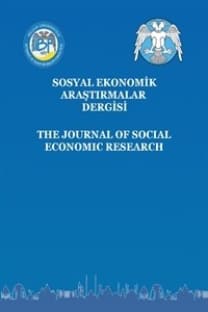TÜRKİYE’DE PARA TALEBİ FONKSİYONU: BİR ARDL YAKLAŞIMI
Para Talebi, Türkiye, ARDL
MONEY DEMAND FUNCTION IN TURKEY: AN ARDL APPROACH
Money Demand, Turkey, ARDL,
- ISSN: 2148-3043
- Yayın Aralığı: Yılda 2 Sayı
- Başlangıç: 2000
- Yayıncı: Selçuk Üniversitesi
OSMANLI’NIN SON DÖNEMİNİN SOSYO EKONOMİK BUHRANLARI VE MALİ EMPERYALİZM
NEPOTİZM VE ÖRĞÜTSEL BAĞLILIK ARASINDAKİ İLİŞKİNİN İNCELENMESİ VE BİR UYGULAMA
PSİKOLOJİK GÜÇLENDİRME VE DUYGUSAL BAĞLILIK: EMNİYET TEŞKİLATI ÖRNEKLEMİ
LİDERLİK DAVRANIŞLARININ ÇALIŞANLARIN STRES DÜZEYLERİNE ETKİSİ: BİR ALAN ARAŞTIRMASI
Göksu AKCAN, Agah Sinan ÜNSAR, Selin KÜÇÜKKANCABAŞ
DÖNÜŞÜMCÜ VE ETKİLEŞİMCİ LİDERLİK TARZLARININ ÖRGÜTSEL ÖZDEŞLEŞME VE İŞ TATMİNİ ÜZERİNDEKİ ETKİLERİ
Müfide Şule EREN, Özlem Çakır TİTİZOĞLU
TÜRKİYE’DE PARA TALEBİ FONKSİYONU: BİR ARDL YAKLAŞIMI
Mikail ALTAN, Mehmet Ali CANDOĞAN
PATERNALİST LİDERLİK İLE ÖRGÜTSEL VATANDAŞLIK DAVRANIŞI ARASINDAKİ İLİŞKİYE YÖNELİK BİR ARAŞTIRMA
A. Aslan ŞENDOĞDU, Meral ERDİRENÇELEBİ
ÜNİVERSİTELERDE GİRİŞİMCİLİK EĞİTİMİ
YILDIRMA (MOBBİNG) DAVRANIŞI: SAĞLIK ÇALIŞANLARI ÜZERİNDE BİR ARAŞTIRMA
